They predicted thundershowers in the afternoon. While I didn’t believe it would actually rain this time of the year (and it didn’t), it was a good idea to set off early in the morning. It took us nine hours to drive from Al Asad to Al Qaim, although some of that resulted from a problem we had with a tire and the slower speed we had to maintain because of the hot weather. It is much nicer in the morning anyway. The MRAP air conditioner can keep the vehicle reasonably cool until around 1400. We set off at 0615.

Our first stop out of Camp Gannon II was a new agricultural area. This desolate land will be opened up by new wells and a power line paid for with CERP funds. Our Ag-Advisor, Dennis Neffendorf, examined the soil and water and pronounced both superb, but that is not the only consideration.
According to all I can find out, the land here is clearly demarcated – i.e. ownership is clearly documented and widely accepted. This area evidently belongs to the Salmoni tribe and individual tribe members have their own allotments.
BTW – We understand that tribal politics is still very important and tribal identity very strong. When we help one tribe, others want their share.
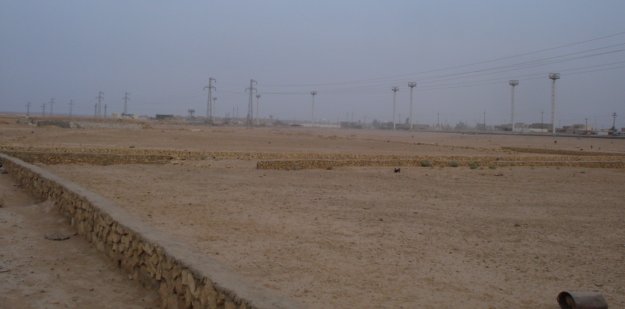
Dennis tells me that last time he was at this location a couple of months ago it was mostly undeveloped area. Now we find that some houses have been started and ownership has been marked with neat stone walls. Planting season is late September to October. In these plots, they will grow wheat, other grains and potatoes. Dennis says that they can get 25 tons of potatoes per acre (although acre is not a measurement they use), which is comparable to a good yield in the U.S. A very large variety of fruits, vegetables and grains can be easily produced on this ground. This land is immensely productive when it is watered. The soil has excellent drainage, a plus for irrigation. It does not retain excess water and is not subject to excessive salinity or waterlogging. In any case, the water this far up the river is not yet heavily laden with salts and minerals.

As we crossed the Euphrates into Ramanna, we saw what the land mentioned above may look like in a couple of years. Everything is green and intense production is possible. Crops include wheat, sunflowers, potatoes, dates, pomegranates and citrus. This soil and climate (it is a big cooler here than in most other parts of Iraq) can grow almost anything except tropic plants such as bananas or mangos.
Look at the dates hanging from that tree in the middle. They look like five-pound sacks.

They grow a lot of fodder crops, especially alfalfa to feed to livestock. We saw some healthy looking Holstein cows and a lot of goats and sheep. The locals claim that the quality of their sheep is superior to all others in the area. We would expect them to say that, but that opinion is evidently shared by many others. There is significant export demand for sheep from the Al Qaim region.
We had to make an unexpected stop when one of our MRAPs damaged and overhead electric wire. I think that the locals are actually pleased when something like that happens, since we pay to repair the damage and usually make it better by elevating the wire so that it won’t happen again. I took this serendipitous opportunity to look around this green and pleasant area. It was still only around 0730, so it was pleasantly cool. The air had a living farm smell and the country roads were busy with tractors, trucks and pedestrians. This prime and unique farm land is as densely settled as an American suburb. I would consider it a bit crowded. It is astonishing to think that they can grow enough crops to support families and even have enough to sell, but that is true.
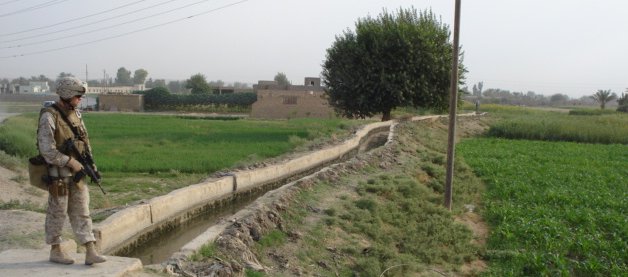
Kids smiled and waved at us, but we also got some disagreeable stares. This is unusual in my experience. One of the Marines told me that this area had recently been heavily insurgent, that not everybody around here was as favorably disposed towards Americans as we might like and that the relative absence of young men of military age was not mere coincidence.

Since we were running ahead of potential bad weather and we had to make up the time lost by our mishap with the wire, we didn’t have time to look as thoroughly at the farmland as we intended. We stopped at a field Dennis had visited a couple months ago. At that time, he said that it was covered with wheat stubble. Now it was cleared. Evidently they let the goats at it, as evidenced by the gratuitous fertilizer spread liberally on the dirt, and they had harvested straw.

The bones of the land and the irrigation system were easy to see. They use flood irrigation and fields are divided up into squares around ten yards square. You can tell the soil is fertile just by looking at it. It has abundant organic material and seems to be alluvial and/or loess, which makes it easy to work and provides good drainage.

Below is Dennis talking about farming
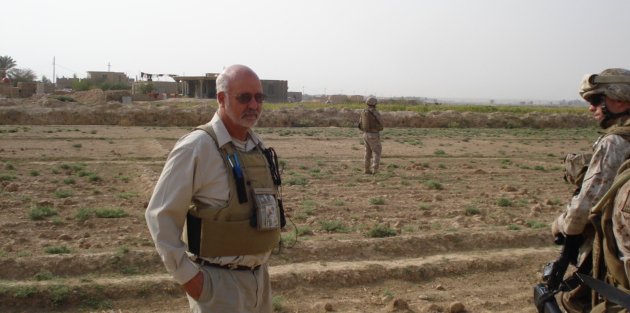
Below is a brick making operation. These are concrete. We saw many others making brick from clay. They employ hundreds of people.
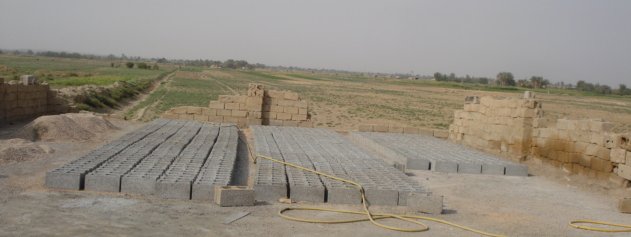
After a brief look around, we headed off for Camp Tripoli, which is under construction and almost finished. Tripoli has a wonderful view of the river and of the verdant farmland along the banks. Otherwise, the camp has little to recommend it at this time. There is lots of moon dust.
At Tripoli, we had a chance meeting with a Mr. Raghibassi, who is an electrician. He said that he had met me on two previous occasions, but that they were big events and I probably didn’t remember him. He was right, but I think that I obfuscated enough to spare his pride. I should have remembered him because he had some very interesting things to say about electricity and power generation in general. I have his email. I will be in contact with him re and write more later.
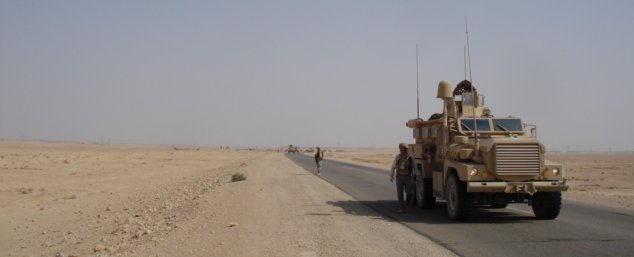
We had an uneventful trip back to Al Asad. It didn’t rain, but a very interesting dust formation did blow in right after chow.
